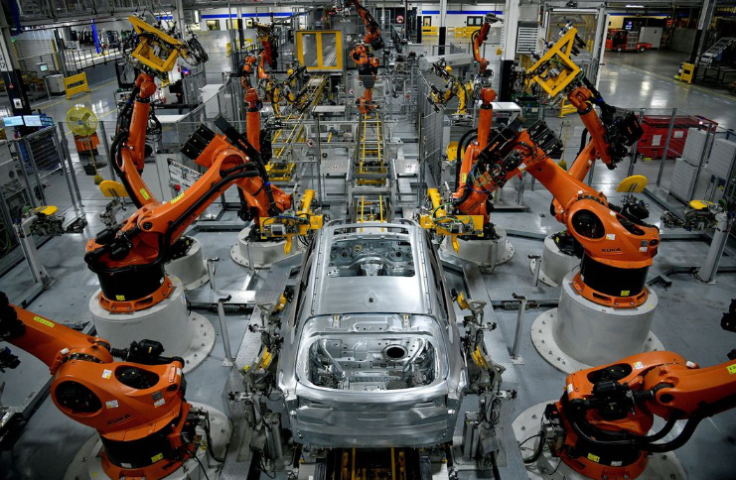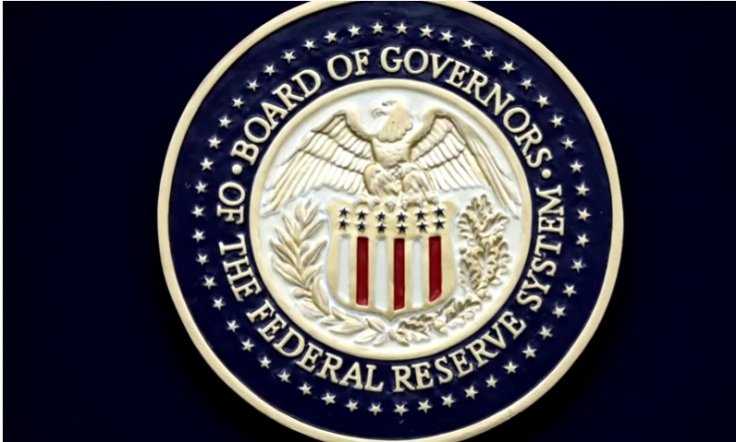U.S. economic growth, still racing at a potentially inflationary pace as other key parts of the world slow, could pose global risks if it forces Federal Reserve officials to raise interest rates higher than currently expected.
The Fed's aggressive rate increases last year had the potential to stress the global financial system as the U.S. dollar soared, but the impact was muted by largely synchronized central bank rate hikes and other actions taken by monetary authorities to prevent widespread dollar funding problems for companies and offset the impact of weakening currencies.
Jackson Hole Conference
Now Brazil, Chile and China have begun cutting interest rates, with others expected to follow, actions that international officials and central bankers at last week's Jackson Hole conference said are largely tuned to an expectation the Fed won't raise its rate more than an additional quarter percentage point.

While U.S. inflation has fallen and policymakers largely agree they are nearing the end of rate hikes, economic growth has remained unexpectedly strong, something Fed Chair Jerome Powell noted in remarks on Friday could potentially lead progress on inflation to stall and trigger a central bank response.
That sort of policy shock, at a moment of U.S. economic divergence with the rest of the world, could have significant ripple effects.
"If we get to a point where there is a need for ... doing more than what's already priced in, at some point markets might start getting nervous ... Then you see a big increase in the risk premia in different asset classes including emerging markets, including the rest of the world," said International Monetary Fund chief economist Pierre-Olivier Gourinchas. "The risk of a financial tightening, a very sharp financial tightening, I think we cannot rule that out."
Pandemic Shock
After the pandemic shock and the inflationary rebound that had most countries raising rates together, it's normal now for policies to diverge, Cleveland Fed President Loretta Mester told Reuters on the sidelines of the Jackson Hole conference on Saturday.

But a lot rides on the Fed getting it right.
"The economy is a global economy, right? It's an interconnected economy," Mester said. "What we do with our policy - if we can get back to 2% in a timely way, in a sustainable way, if we have a strong labor market - that's good for the global economy."
GLOBAL DIVERGENCE
Fed policymakers will deliver a crucial update to their economic outlook at a Sept. 19-20 meeting, when they are expected to leave their policy rate unchanged at 5.25% to 5.5%.
If inflation and labor market data continue showing an easing of price and wage pressures, the current forecast for just one more quarter-point increase may hold.
Yet Fed officials remain puzzled, and somewhat concerned, over conflicting signals in the incoming data.
Some point to weakening in manufacturing, slowing consumer spending, and tightening credit, all consistent with the impact of strict monetary policy and cooling price pressures.
But gross domestic product is still expanding at a pace well above what Fed officials regard as the non-inflationary growth rate of around 1.8%. U.S. GDP expanded at a 2.4% annualized rate in the second quarter, and some estimates put the current quarter's pace at more than twice that.

The contrast with other key global economies is sharp. The euro area grew at an annualized 0.3% in the second quarter, essentially stall speed. Difficulties in China, meanwhile, may drag down global growth the longer they fester.
Quizzed about the divergence after a speech here, European Central Bank President Christine Lagarde noted after the Russian invasion of Ukraine last year, the outlook was for a euro-area recession, and a potentially deep one in parts of it.
Growth, albeit slow, has continued, and inflation has fallen, an overall dynamic not dissimilar to that of the U.S.
"We expected all that to be a lot worse. It has turned out to be much more robust, much more resilient," Lagarde said.
U.S. fiscal policy is driving some of the difference with $6 trillion in pandemic-era aid still bolstering consumer spending. A recent investment push from the Biden administration is supporting manufacturing and construction.
China may also play a role, economists say. Its slowdown after a short-lived growth burst earlier this year could pinch Germany's exports and slow Europe's growth, for instance.
But, Citigroup Chief Economist Nathan Sheets said, "when you hear economists give you three or four reasons for something, that's usually because we really don't know."
TOO STRONG FOR COMFORT?
The longer the U.S. economy outperforms, the more Fed officials wonder if they understand what's happening.
A recent improvement in productivity, for example, could explain how inflation continues falling even as growth remains strong.
Under current Fed thinking a period of below-trend growth is needed to drive inflation sustainably back to the 2% target. Key inflation measures are currently more than twice that.
Most officials do think the economy will slow, as tight policy and stringent credit are more fully felt and pandemic-era savings are spent down. Consumer loan delinquencies are starting to rise, and the restart of student loan payments could upend services spending less affected by Fed actions so far.
"There may be significant further drag in the pipeline," Powell said on Friday, a reason to hold off on further hikes and study how the economy evolves.
But he added the Fed was "attentive to signs that the economy may not be cooling as expected," with recent consumer spending "especially robust," and a housing sector "showing signs of picking back up."
Any significant surge in home prices or rents would undermine the Fed's view that easing shelter costs would be key in helping to slow the overall pace of price increases.
While the focus is on inflation data, topline economic growth that remains above trend could undermine faith that inflation will fall, and increase concerns that it might rise -- an outcome Fed officials view as particularly pernicious and have pledged to avoid.
"Evidence of persistently above-trend growth could put further progress on inflation at risk and could warrant further tightening of monetary policy," Powell said.
That's the moment other countries need to watch and prepare for, Gourinchas said.
"The rest of the world has to make sure that they are ready for the potential risk that we're not there yet in terms of the U.S. disinflation."








